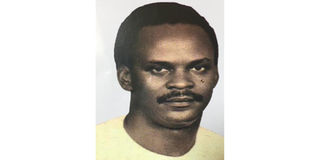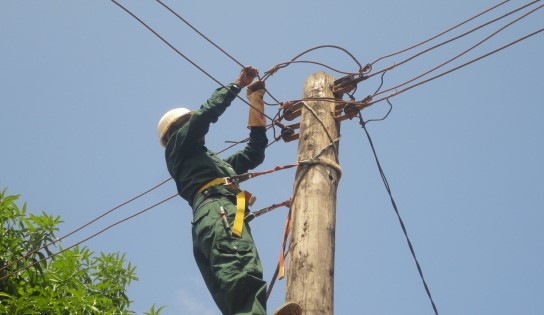Remembering the true father of geology in Tanzania

The first Tanzanian geologist in the country Rumisha Henry Kimambo. PHOTO | COURTESY
What you need to know:
- Geoscientists in Tanzania and worldwide are grieving Kimambo’s death and remembering his illustrious career
Dar es Salaam. On December 28, 2022, Tanzania so sadly lost Rumisha Henry Kimambo, the first Tanzanian to study the profession of geology in the country. Geoscientists in Tanzania and elsewhere are mourning his passing and honoring his distinguished career.
Born on February 15, 1934, in Mbokomu village, Moshi Rural District, Kilimanjaro Region, Kimambo went to Natiro-Mbokomu Primary School in Kilimanjaro from 1946 to 1950 and later received secondary school education at Ilboru, Arusha, and Tabora Boys’ School, Tabora. From 1958 to 1961, he studied science subjects at the University of Makerere, Uganda. He joined Glasgow University in Scotland in 1961 and graduated with a bachelor of science (BSc) in geology with honours in 1965. He is recorded as the first Tanzanian to obtain BSc in geology, hence considered as the father of geology profession in Tanzania.
On completion of BSc and returning to Tanzania, Rumisha was employed by the Government of Tanzania, in 1965, as the first Tanzanian geologist, at the Department of Mineral Resources (now referred to as Geological Surveys of Tanzania (GST)), which by then had only foreign geologists/British geologist employees whom the government inherited from the British government after independence in 1961.
He spent much of the next two years after being employed by the government in the field of geological mapping and mineral exploration while attached to the UNDP projects in the Lake Victoria Gold Field. During this work, the Buck Reef gold deposit was discovered 1966/67, which eventually became Buck Reef Gold Mine, fully owned by State Mining Corporation (Stamico) in 1984, which was operational for about eight years and closed down on the advent of technical problems during the year 1989/90 and reopened under joint venture arrangements, Today, about 2,000 ounces of gold are produced monthly, which is a living testimony to the discovery made by Rumisha and his team.
Rumisha went on to pursue an MSc degree in mineral exploration at McGill University, Montreal, Canada, from 1967 to 1969. Upon his return, in 1969, he was promoted to chief geologist at GST up to 1971, and in 1972, he was appointed assistant commissioner for minerals at the then ministry of Commerce and Industries, which was responsible for minerals and relocated to Dar es Salaam from Dodoma.
After a short stint at the Ministry in 1972, the late Mwalimu Julius Nyerere appointed him to the position of General Manager to lead the newly established State Mining Corporation (Stamico), which took over a number of mines that were previously under the National Development Corporation (NDC).
During his tenure as General Manager of Stamico, he spearheaded the strong growth of Stamico and its subsidiaries, which included Williamson Diamond Ltd., Tancut Almasi, Tanzania Gemstone Industries, Tanzania Portland Cement (Wazo Hill), Nyanza Salt Mine, Pugu Kaolin, and Tanganyika Meerschaum Corporation Ltd.
Kimambo’s diligence and commitment led Mwalimu Nyerere to appoint him the general manager of the newly established Tanzania Saruji Corporation (Saruji) in 1976, which was mandated to develop mineral-based manufacturing industries for building materials and other applications.

Rumisha Kimambo in his younger years
During his tenure as the general manager of Saruji, the Tanzania Portland Cement Factory (Wazo Hill) was expanded, and furthermore, two more cement factories, namely Tanga Cement and Mbeya Cement Limited, were constructed. In line with its mandates, Saruji also established other subsidiaries such as Mbagala Sheet Glass, Morogoro Ceramics, Nyanza Container Glass, Saruji Trucking, and Saruji Training Institute. He retired from Saruji Corporation in 2000 after subsidiaries constituting the corporation were privatized. He pursued other interests within his field of competence.
Mzee Kimambo is also to be credited for playing a pivotal role in the establishment of the Geology Department of the University of Dar es Salaam in 1974. Other notable achievements include being a founding member of the Tanzania Geological Society (TGS) in 1969 and its president in 1986. Rumisha was chairman and board member in various public and private organisations including National Housing Corporation, State Mining Corporation, Kiwira Coal Mines Limited, and Tanzania Portland Cement (Wazo Hill).
Rumisha was an avid reader and writer of articles of a scientific nature, and Tanzanian scientists will remember him for the publications he made over the years, which include two volume books on industrial minerals in Tanzania.
These are “Development of Non-Metallic Minerals and the Silicate Industry in Tanzania, Volume I: Basic Concepts, Strategies, and Achievements. Published by East African Publication Limited, 1986 and Development of Non-Metallic Minerals and the Silicate Industry in Tanzania Volume II - A Profile of the Silicate Industry in Tanzania (Editor), 1988; both Published by East African Publications Limited”.
Rumisha was known for his impeccable leadership style and his soft spokenness. Those who worked under him testify to his great ability to build consensus through accommodating what others have to say on any issues under discussion.
Presently, Tanzanian geoscientists are in discussions about establishing some awards or prizes in his honour. For example, it has been proposed that Rumisha Kimambo’s annual award or prize for the best student in a geological course at one of the universities in Tanzania, such as “Geology and Mineral Resources of Tanzania,” be established.
Other suggestions include naming any new mineral discovered in Tanzania in the future after him, though this requires Tanzanian geoscientists to collaborate with other international bodies that authorise the naming of newly discovered minerals.
For these particulars, we are much indebted to the courtesy of Honourable Professor Sospeter Muhongo, Member of Parliament (Musoma Rural constituency), the retired Professor of Geology at the Department of Geology of the University of Dar es Salaam, and former minister for minerals.
Tanzanian geoscientists, we are in deep sorrow for the loss of our pioneer, and for sure, he has left a legacy worth emulating by every geoscientist. May God Rest his soul in eternal peace. Amen.
Compiled by the following geoscientists: Professor Sospeter Muhongo, Mr Florian Ngunangwa, Dr Peter Dalaly Kafumu, Dr Athanas Macheyeki, Julius Sarota, Gideon Nasari, Emmanuel Jengo, George Mwakarukwa


